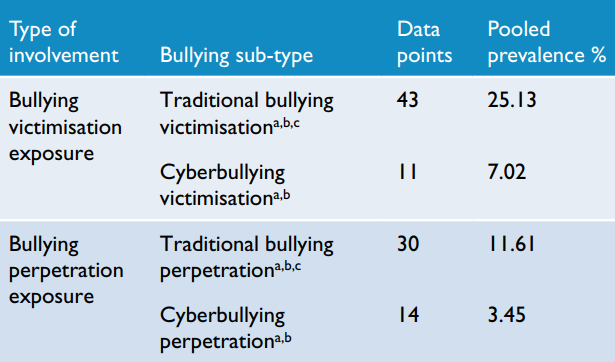
Risks to self & others in the Digital Environment;
How has Digital Technology impacted us as teachers and our work environment?
Let’s discuss the risks in the digital environment. There are obviously risks in the classroom of cheating using communication platforms and AI such as ChatGPT. What else needs to be considered in being cyber safe? How has digital technology impacted us as teachers and our work environment?
This very blog you are reading is an assessable submission for my university education. As I publish it online for all to see, I am scared! Thoughts run through my head about possible feedback, trolling of my imagery or colour schemes, disagreement on my findings… I don’t consider my blog will attract many views, however, according to the experts, cyber bullying is a serious issue, particularly in the world of education.
In 2018, Daylesford Secondary College students were fortunate enough to trial Yondr Pouches. These pouches (as seen below in Figure 1) supported the students education by locking away devices until the end of the day.
Despite the withdrawals experienced by students, there was a “sense of comfort knowing where the phone was” according to Lucinda Lowe, Daylesford junior school captain 2018.
Figure 1

“STUDENTS CAN OPEN THE YONDR POUCH AFTER THE FINAL BELL ON AN UNLOCKING STATION. Picture Lachlan Bence. Bendigo Advertiser.”
Ms Lowe noted whilst students appeared bored at times, students were aware of dangers of social media including cyber bullying and suicide risk.
Whilst using the Yondr pouch, there appeared to be “a lot more concentration in other classes.” (Lowe, 2018). Students overall seem to understand the risks of technology, and, reap the rewards of set boundaries by the school.
Dr Sharon Horwood, Psychologist of Deakin University shared with the Bendigo Advertiser the importance of understanding the “potential social-emotional health implications on teenagers” unfolding with their overload of smartphone use.
“About 60% of Australian parents report family conflict due to teenager smartphone use.” (Horwood, 2018)
Dr Horwood identified the risks to family connections potentially caused by “the fear of missing out” referring to leaving devices due to home expectations (eg. bedtime).
The research into cyberbullying began in 2006 (Jadambaa et al., 2019, p9).
Jadambaa et al. (2019) continued the research and the table below (Figure 2) shows some (not all) of their findings.
Figure 2

“POOLED BULLYING PREVELANCE ESTIMATES FOR TRADITIONAL BULLYING AND CYBERBULLYING BY THE TYPE OF BULLYING INVOLVEMENT.” This table does not contain all data from original source.
Whilst the perpetration and victimisation of cyber bullying was a much lower rate in comparison to traditional bullying, it is still present.
In May, 2024, 2 male students were expelled from an elite private school in Melbourne’s eastern suburbs (ABC news, May 7, 2024). These students were found to have created an online spreadsheet ranking other female students according to their physical appeal, an act potentially extremely damaging to mental health. What some may consider their act to be a childish teenage boy conversation, the severity of their actions was heightened due to the fact this was accessible online, gaining further attention.
“I am saddened that the actions of a few individuals can cause so much harm as social media has the power to amplify the damage that can be done and the anguish inflicted.” -Dr Mark Merry, Principal of Yarra Valley Grammar. According to ABC news, some of the necessary action taken was communication with police, counselling to students and a review on the respectful relationships program.
Whilst it is common knowledge that technology provides progress and opportunities in society (eg. communication, online collaboration, creativity outlets etc), there are clear risks to mental health and relationships (family and peers) that need to be considered.
Conclusion
After observing incidents of cyber bullying risks such as the incident at Yarra Valley Grammar and also the success shown displayed in the Yondr program at Daylesford, I believe I will look to reduce the use of digital technology in my own teaching time and hope to experience first hand the use of a Yondr pouch in my future workplace. Although my students may dread the lack of connection, their social skills with thank me in the future!
References
Whelan, A. (2018, May 09). Daylesford Students lock phones in Yondr pouches for a day. Bendigo Advertiser. (Online). https://www.bendigoadvertiser.com.au/story/5389317/[ED6]
Jadambaa, A., Thomas, H. J., Scott, J. G., Graves, N., Brain, D., & Pacella, R. (2019). Prevalence of traditional bullying and cyberbullying among children and adolescents in Australia: A systematic review and meta-analysis. Australian and New Zealand Journal of Psychiatry, 53(9), 878–888. https://doi.org/10.1177/0004867419846393
Students expelled from Yarra Valley Grammar over spreadsheet that used offensive terms to describe female pupils. ABC News. (2024, May 7). https://www.abc.net.au/news/2024-05-07/
